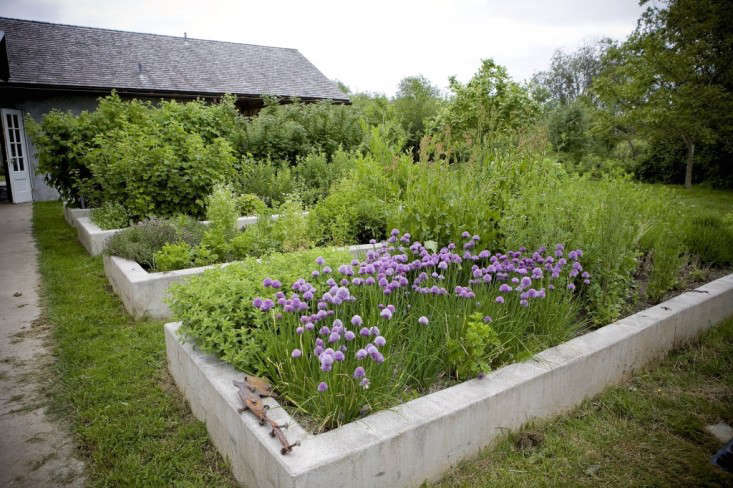Chives, Allium schoenoprasum: “Windowsill Herb”
Why wouldn’t you grow chives? The herb tastes divine, repels bad insects, attracts bees, and grows in shade. Did I mention that chives are perennials, coming back year after year in the garden? They also are happy to grow indoors on a windowsill. Bonus: Chives respond well to neglect.
This garden workhorse has been cultivated by humans for more than 5,000 years and grows in wild varieties in both the east and west. Our forefathers (and fore-doctors, chefs, and gardeners) valued Allium schoenoprasum for its medicinal properties, its flavor in fish, egg, and soup dishes, and its ability to fight off maleficent insects, mildew, and fungal infections in the garden.

The French use chives as a crucial component of the classic fines herbes–a blend of fresh herbs used to season egg dishes, sauces, and butter.

Cheat Sheet
- Perennial herb; chives are hardy in growing zones 3-10.
- Deer-resistant.
- Bees find the purple flowers irresistible.

Keep It Alive
- Full to partial sun.
- Once established, chives adapt to moist or dry conditions.
- Chives grow wonderfully outdoors or in containers; divide established plants after they re-appear in the spring.

Plant in clumps throughout your vegetable or flower bed. You can distribute some in a windowsill planter, too, as chives grow well in partial shade and in containers.

Chives establish quickest from a division, but you can also grow from seed. Harvest frequently, and if you notice a lackluster appearance, chop to about an inch from the base to give the plant a fresh start.

In the spring, simply wait for chives to come up, divide the plants to make more, and water as you please. For an extra dash of chive power, hang a bouquet of dried chives for protection. The purple flowers last very well dried, and are an excellent cut flower in vases or bouquets.
N.B.: For more, see all our stories about Edibles in our Garden Design 101 guides. And If you’re planning a spring herb garden, see more tips:
- Basil 101: A Field Guide to Growing, Care & Design.
- DIY A Countertop Herb Garden.
- Thyme 101.
- Ikea Hacks: A Portable Kitchen and Indoor Herb Garden.
- Lavender 101.
- Everything You Need to Know About Edible Gardens.
- Rosemary 101.
Finally, get more ideas on how to successfully plant, grow, and care for chives with our Chives: A Field Guide.
Interested in other edible plants for your garden? Get more ideas on how to plant, grow, and care for various edible plants (including flowers, herbs and vegetables) with our Edible Plants: A Field Guide.









Have a Question or Comment About This Post?
Join the conversation